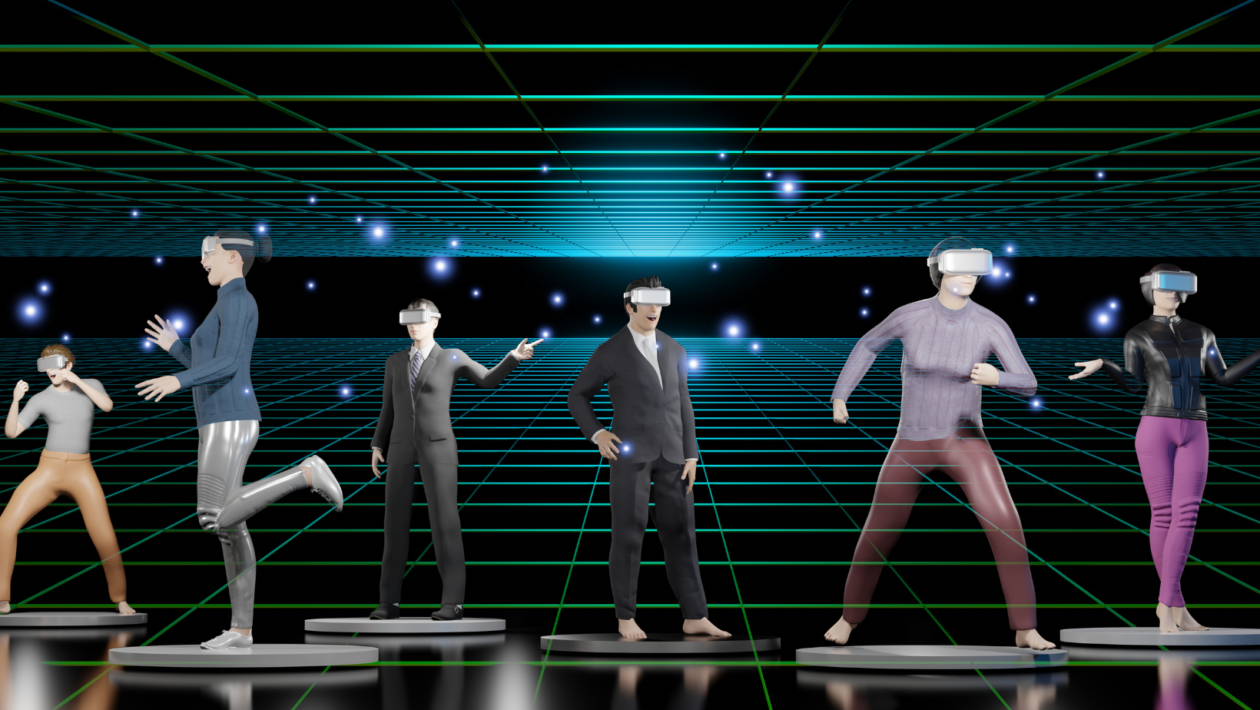The last month has seen a seismic shift in the fortunes of some of the most powerful tech companies in the world. The chaos following Elon Musk’s Twitter takeover has resulted in advertisers fleeing the platform and trolls running riot. Meta’s cull of over 11,000 staff after a collapse in revenue speaks of overinvestment and miscalculations. The architects of Web 2.0 are now scrambling to understand what’s gone wrong in a system that they themselves helped shape.
Both Musk and Meta’s Mark Zuckerberg accept that the status quo needs to change to secure a future for their platforms. While Musk pursues his “digital town square” ideals, Zuckerberg is doubling down on immersive metaverse projects. Estimated to be an US$825 billion industry by 2030, there has been no lack of fervor from businesses and brands keen to gain a foothold in virtual worlds. But beyond the commercial potential that Zuckerberg and many others see in the metaverse, there is a societal opportunity to improve on the real world — or risk perpetuating its problems.
An inaccessible ecosystem
Despite talk of inclusivity, the majority of the metaverse is currently being constructed by a tiny pool of about 160 companies, each building for a similarly limited group of users. Apart from the obvious tech barriers such as low internet bandwidths, the tools that allow immersion in the metaverse, such as VR headsets and high-end graphics cards, are prohibitively out of reach for much of the world’s internet users, regardless of geography or nationality.
Similarly, digital wallets are a significant friction point for users looking to purchase tokens needed to engage with virtual worlds. On-ramps to crypto favor those with traditional fiat banking access, making life difficult for many in developing countries.
Language is also a hurdle. While much of the user-facing infrastructure of Web 2.0 was built in English, the metaverse does not need to follow in those same footsteps. Machine language and artificial intelligence linguistic models have the capability to create cross-lingual worlds to engage and onboard millions in some of the most digitally savvy populations in the world, providing this is a mission as opposed to an afterthought.
Unequal access, unequal opportunities
These barriers to entry have contributed not just to a user base that is unrepresentative of our societies, but also a lack of inclusive participation within the metaverse that is resulting in worlds that are not built for the majority.
Wander onto any of the major metaverse projects on offer today and be greeted by ostentatious displays of wealth in the form of NFT flex parades. Well-heeled collectors will shell out hundreds of thousands of dollars to be virtual neighbors of celebrities, while brands are snapping up virtual land in the hopes of a big return when the metaverse turns mainstream.
Those who cannot afford to flex are left with unsavory workarounds if they want to engage. Take the secondary NFT “rental” markets, which have emerged on the back of NFT scholarship programs. Those who can’t afford to buy NFTs rent them instead, in order to take part in play-to-earn (P2E) blockchain games. NFT owners then reap a percentage of what they make. There are even suggestions that virtual gaming worlds may look to developing markets to find users to populate games, paying out small salaries to people willing to play background roles while rich players take the lead.
Defining purpose beyond profit
Without inclusive participation, the metaverse shortchanges itself. The technology that sits behind it has the potential to provide unprecedented utility for everyone. Take education, for example, where immersive forms of teaching could make learning more accessible for people unable to travel to school. VR programs could allow doctors to practice intricate, highly risky operations before they actually perform it on patients. In other areas, the metaverse could revolutionize the ecommerce experience or improve manufacturing processes. With so many elements in the mix, a multitude of diversified job options will emerge to service these industries.
Yet for the metaverse to live up to its potential, brands and businesses, consumers, and regulators must overcome the short-termism that has characterized much of our Web 2.0 realities today, and look beyond profits. Builders of the metaverse need to recognize that interoperability, not siloed virtual worlds, is what will determine the success of the metaverse, and that cooperation, not competition, will get us to where we want to be.
This cooperation will come in varied forms — from big brands channelling energy into onboarding a broad range of users, to ensuring smaller organizations are represented and have a say in the evolution of the metaverse. And although its decentralized nature means that there is no one authority in the metaverse, this doesn’t mean that there shouldn’t be a shared sense of standards, ethics, and governance that enables self-regulation, rendering unnecessary control or interference from external powers. Principle-building, in its inception phase in some parts of the world, will be central to the safe participation of all users.
We are at a defining moment in the metaverse’s development and need thoughtful, collective action to ensure we don’t recreate the legacy structures of Web 2.0. If the metaverse is going to redefine our digital experiences in the coming years, do we want the bastions of Web 2.0 building it as the next iteration of their crumbling platforms? Or do we want something better — something that is built first and foremost for the people, not profits.





